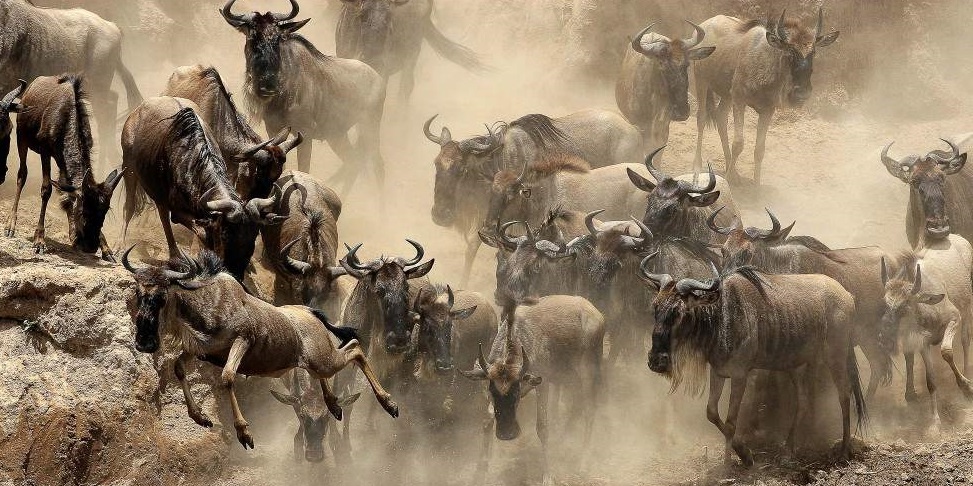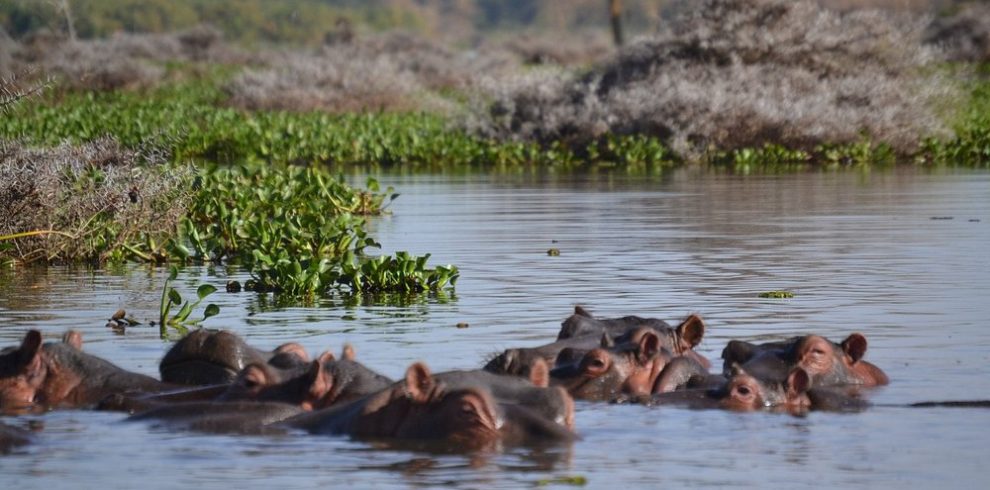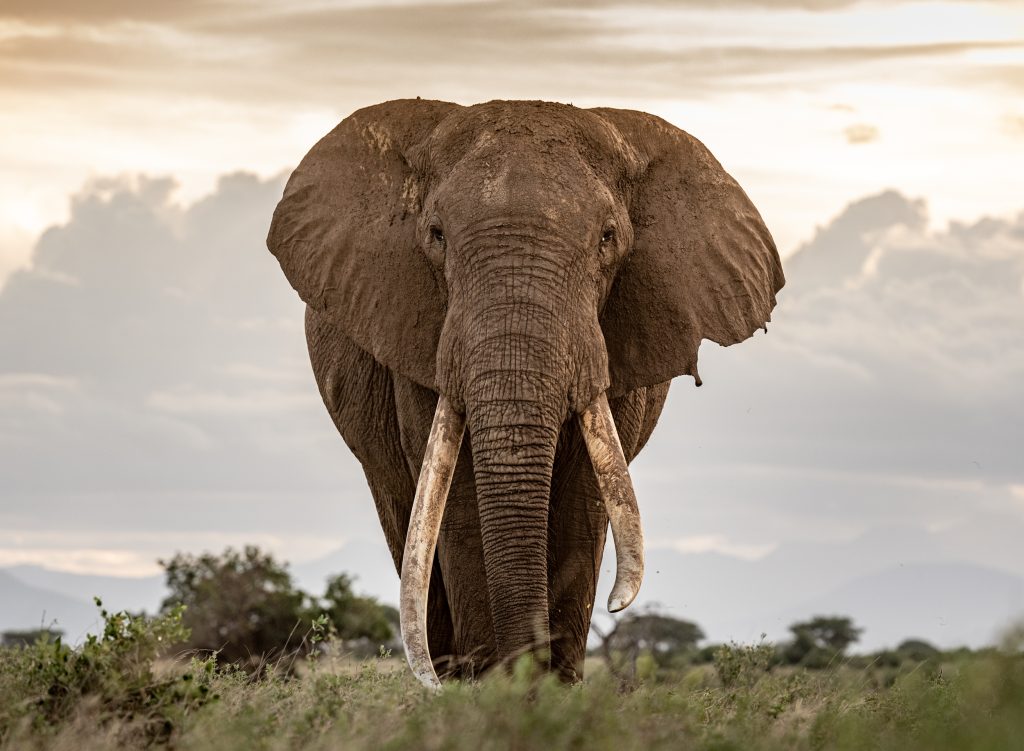
The African elephant (Loxodonta africana) is one of the most iconic animals on the planet. Known for its immense size, remarkable intelligence, and complex social structures, the African elephant is a symbol of the wild and one of nature’s most magnificent creatures. It is the biggest land animal, so it cannot be ignored.
Behind its size and overwhelming solemnity however, lie an astonishing depth of behaviour, anatomical peculiarities, and ecological role that make this animal quite unique. In this article, we will explore 5 fascinating facts about the African elephant, shedding light on its incredible adaptations, its crucial role in the environment, and the challenges it faces in the modern world.
1. The African Elephant Is the Largest Land Mammal on Earth

Without a doubt, one of the most striking facts about the African elephant is its size. The African elephant is the largest land mammal on Earth, a distinction it holds proudly over all other animals. They can be up to13ft ( 4m) tall at the shoulder, and weighing up to 14,000 pounds (6,350 kilograms), males are disproportionately larger than females.
These are great in size and are admired and feared at the same time, which, in some ways, gives them some benefits and setbacks, in their wild environment. Incomprehensible Mass and Power An adult male African elephant, often referred to as a bull, can weigh as much as a small truck. They have long tusks that are actually elongated incisors measuring up to 10 feet (3 meters) long and up to 220 pounds (100 kilograms) per unit.
These tusks serve a purpose; they aid the elephant when it digs up water, loosening tree barks and when in danger of attack by other animals. In addition to their tusks, African elephants are equipped with thick, muscular trunks that can weigh as much as 400 pounds (180 kilograms) and have over 150,000 muscle units. This trunk is a masterpiece of nature engineering and the elephant can achieve many things using this trunk like drinking, grabbing food, dusting itself and even communicating. Their size and strength enable African elephants to manipulate their environment in ways that no other animals can.
They are able to topple trees, tear out flora and force their way through dense undergrowth, making the landscape suit them. Although their physical capabilities aid their survival in the usually harsh conditions in which they live, it also contributes immensely to the health of the ecosystems. African elephants are known to be “keystone species” because of their impact on the habitats they live in. Pros and Cons of Size So many privileges come with being the largest terrestrial animal, one of them being that there are fewer natural predators and that it can move long distances in the search of food and water.
But there are also challenges associated with it. African elephants need to consume up to 300 pounds (136 kilograms) of food every day, a feat made possible by their massive size but also requiring a substantial amount of time and energy. Such never-ending necessity to feed, and together with the effects of their humongous size, they must cover great expanses of land in order to satisfy their food requirements.
2. African Elephants Have Highly Developed Social Structures
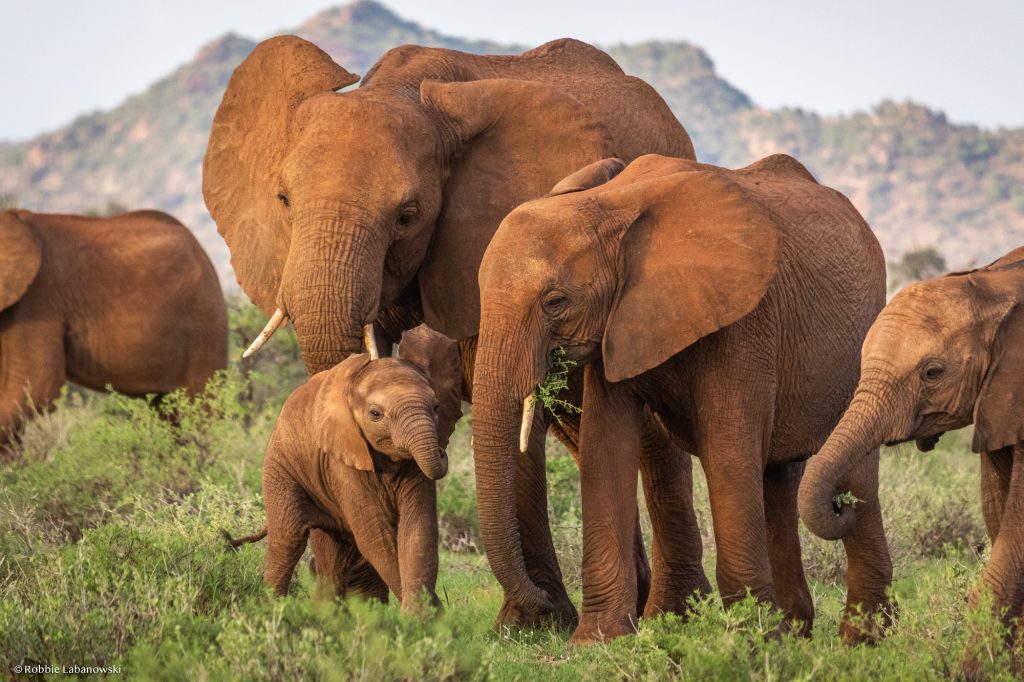
One of the most fascinating facts about the African elephant is its highly organized and sophisticated social structure. African elephants live in tight-knit family groups that are led by a matriarch, usually the oldest and wisest female in the group. Such groups of related individuals (herds or families) usually comprise a few females, together with their young ones. Upon maturity, males will tend to leave the group and live singly or with occasional groupings of other males.
The Function of the Matriarch The herd depends on the matriarch to survive. Being the eldest female, she has the accumulative wisdom of numerous years of experience as she has witnessed various seasons, migration, and struggle. She knows the elements of the landscape so well particularly when it comes to locating water in times of a drought or food in the harsh conditions. When the herd is in danger and when young calves are born, the matriarch steps in and uses her experience and leadership to take care of the herd. The role of matriarch is not just a leadership matter but the emotional welfare of the herd. African elephants are known to display empathy, and the matriarch ensures that the herd remains cohesive, fostering strong social bonds.
When elephants feel upset or sad, such as when a family member dies, the matriarch and other members of the herd may frequently exhibit supportive habits like comforting one another or remaining close to the corpse of the deceased family member over a prolonged length of time. Good Family Secrets and Communication Elephants are the most social of animals, and the family of the elephant is very strong. These connections are reinforced by continual communication in words and otherwise.
All elephants communicate with each other via a wide range of sounds, including long-range and rumbles rumble, trumpets, and growls. These calls perform numerous functions, such as warning other members of the herd about possible danger, organizing the movements, and expressing distress. The elephants also communicate through their trunks and body language like when elephants touch or caresses each other with their trunks.
The touch of the elephants is very well-developed, and they include touch in their communication, expressing love, comfort, or even to just emphasize their social status. This rich system of communication allows African elephants to work together in an efficient and harmonious way, which is crucial for their survival in the wild.
3. The African Elephant’s Trunk Is a Marvel of Evolution
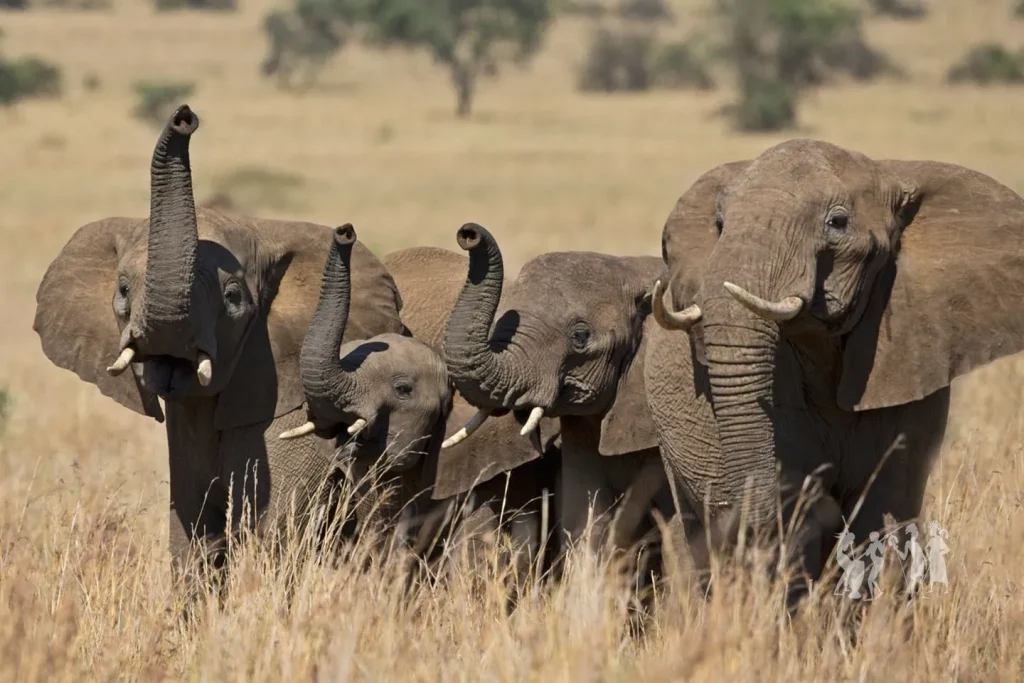
The trunk of an African elephant is one of the most versatile and unique features in the animal kingdom, making it one of the most fascinating facts about the African elephant. It is basically a combination of the upper lip and the nose, and it has a diverse number of uses, as diverse backend as drinking and eating to communications and self-help. A Multi Purpose Tool The trunk of an elephant is one of the most powerful and flexible, and they are able to hoist heavy loads, tear down tree branches and even lift small objects as fragile as a peanut. It has over 150,000 muscle units, and the ability to move in an unimaginably wide variety of ways.
The result of this degree of dexterity is that the elephant can do things which no other terrestrial animal can, as, e.g., plucking up a blade of grass, or stripping the bark of a tree with great exactness. Elephants are believed to drink using their trunks by lifting water into the trunk and pouring them into their mouths. Reptiles also feed using their trunks by tearing leaves, branches, or grasses. It is also a social tool because elephants use the trunk to touch and reassure each other, or to welcome another member of the herd. A Communication System in an Elephant Besides the agile utility of the elephant body, the trunk is one of the most sensitive parts of the animal having a great sense of smell.
Elephants are said to have a far superior sense of smell (potentially thousands of times larger than human senses) and can detect the presence of food, water and threats up to miles away. They use their trunk to sense scents that other animals are not sensitive to and this has been very crucial in ensuring the safety and well-being of the herd. Trunk Self-Care and Cooling The trunk is also used by African elephants in self-care. They can use it to suck up the dust or mud and spray it on the body. This not only assists in protecting against the sun but also gives them relief against insect bites and cooling their bodies. This phenomenon is especially significant in warm weather, because it helps to maintain appropriate temperatures.
4. African Elephants Have Incredible Memory and Intelligence
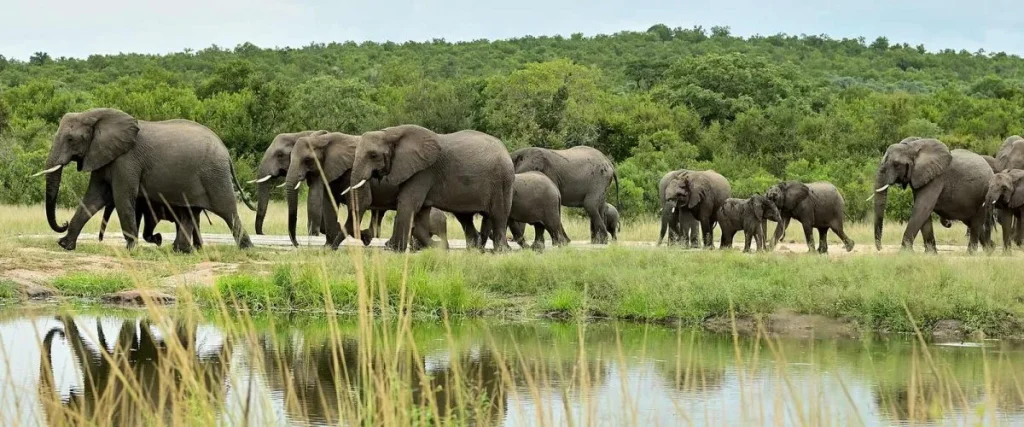
Another fascinating fact about the African elephant is their incredible memory and intelligence. Elephants have been regarded as one of the most intelligent animals on the face of the earth and they compare with primates and cetaceans in the intelligent capacity of these animals. They have very big brains that weigh up to 5 kilograms (11 pounds), and this enables them to process complex information and keep the important information about the surrounding and the interactions with peers.
Navigation and Memory Elephants are also characterized by its remarkable memory, especially in locating food and water. Mature and particularly matriarchal elephants possess an incredible sense of memory, capable of recalling where the water holes, the seasonal migrations, and the zones of danger in previous times are. This attribution of memorizing places and experiences is important as during periods of drought or other environmental adversities, herd survival could hinge on finding known resources once again. Tool Use and Problem-Solving Elephants also exhibit exceptional problem solving skills.
They have been witnessed to work with tools in nature, as when they used branches to swat flies or to dig water. Elephants in captivity have been caught manipulating their environment as a way of solving puzzles and even opening gates or using their trunks in engaging with other objects. These qualities of adaptability and resourcefulness indicate how intelligent these animals are.
5. African Elephants Are Facing Conservation Challenges

Despite their size and strength, African elephants face numerous conservation challenges, and they are currently listed as vulnerable by the International Union for Conservation of Nature (IUCN). Poaching due to illegal ivory trade is one of the greatest threats to their population. African elephants are also impacted by habitat loss, human-wildlife conflict, and the encroachment of human settlements into their natural territories.
The Consequences of Poaching Poaching for ivory has been a longstanding issue for African elephants, and despite international bans on the ivory trade, poaching continues to threaten their survival. The social structure of elephant herd and its loss of members through poaching is not only a population loss, but also a loss of the social structure of the group. The death of matriarchs or other significant members in the herd may be catastrophic to the herd structure and the survival of the group. Habitat Loss and Human Wildlife Tensions Habitat loss is another significant threat to African elephants. With the increase in human population, settlement patterns and farmlands have increasingly encroached the main destinations of the elephants.
This may cause human-elephant conflict, especially when the elephants destroy crops or build infrastructure. Their habitats are highly fragmented too, isolating kins of elephants, diminishing their genetic variation, and complicating their ability to interact and breed. Conservation Efforts Efforts are underway to protect African elephants, including anti-poaching initiatives, habitat restoration, and community-based conservation programs. Several nations are collaborating with international agencies to track the population of the elephant, conserving their significant habitats, and preventing poaching. These efforts must persist so that this iconic species should not become extinct.
Conclusion
The facts about the African elephant reveal a species that is not only remarkable for its size and strength but also for its intelligence, social complexity, and critical role in maintaining the balance of ecosystems. From their exceptional climbing abilities to their remarkable memory and use of tools, African elephants continue to awe researchers and wildlife enthusiasts alike. However, as they face the twin challenges of poaching and habitat loss, it is essential that conservation efforts remain a priority to ensure that future generations can continue to witness the grandeur of the African elephant in the wild. These magnificent animals are not only an epitome of the African wild but also support animals as keystone species meaning that they are crucial to the ecosystems they live in.

